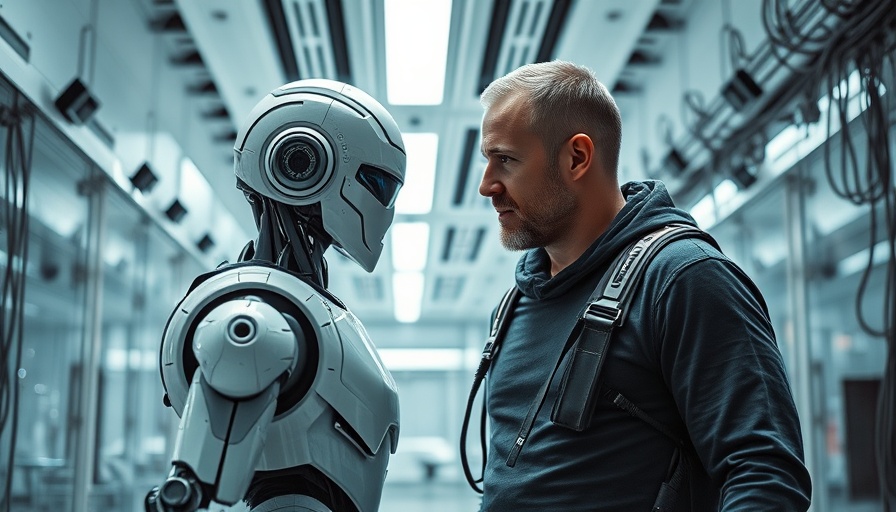
Understanding the Cheating Controversy Around AI
In recent discussions surrounding artificial intelligence, one company, Cluey, has taken center stage as a prime example of the ethical dilemmas that AI can introduce. Founded by 21-year-old Roy Lee, Cluey has received significant attention after its launch video went viral, drawing ire and intrigue about what the future might look like for industries dependent on technology. This article delves into the controversial nature of Cluey's product and its implications for business owners navigating the evolving AI landscape.
In 'Is the Future of AI "Cheating on Everything?"' the discussion delves into a controversial AI tool, prompting us to analyze its implications for businesses and the ethical dilemmas it presents.
What is Cluey and Why is it Important?
Cluey is positioned as a tool that helps users navigate challenges in real-time within high-pressure environments like job interviews and sales calls. The marketing manifesto boldly states, "We want to cheat on everything," suggesting that the app is designed to provide users with an unfair advantage by giving them answers as they engage in critical conversations. This raises significant questions about integrity in both personal and professional domains.
The Impact of AI on Professional Integrity
Many business owners may wonder how AI tools like Cluey can redefine professionalism and ethical standards. Critics argue that utilizing AI to gain an edge undermines personal effort and integrity, which are fundamental to lasting success in any field. For instance, utilizing Cluey during interviews could lead to the hiring of candidates who may not truly possess the skills they claim to have. This is especially concerning in fields that rely heavily on trust and accountability, such as healthcare and finance.
Generational Perspectives: A New Era of Efficiency
Conversely, proponents argue that leveraging AI tools is merely an evolution of the workforce's approach to efficiency. Historian Sam Green points out that current trends in job functionality already involve using search engines and online resources to perform tasks more efficiently. With tools like AI, employees can streamline their work by accessing vast databases of information instantly. As such, some believe that Cluey reflects a shift towards augmented intelligence, rather than outright cheating.
The Blurring Lines Between Cheating and Innovation
As technology advances, the definitions of "cheating" and "innovation" become increasingly ambiguous. Consider how calculators revolutionized learning in mathematics, or how the internet changed how we access knowledge. Just as society has adapted to these new tools, AI could similarly transform our work processes. Yet, this evolution raises the question: Where do we draw the line on what constitutes a fair tool versus a deceptive practice?
Balancing Opportunity with Consequences
One central debate emerging from Cluey's introduction is the societal responsibility that accompanies innovation. While technology has the potential to enhance productivity, it can also catalyze adverse outcomes if misused. Investors and business owners must navigate this delicate balance—ensuring that tools are used ethically while still reaping the benefits of efficiency. This requires a cultural shift that honors integrity alongside the pursuit of technological advancement.
The Future Landscape: Adapting to Change
As Cluey challenges traditional norms of learning and application, the business landscape will inevitably adapt. In the age of AI, there will likely be increased demand for transparency and authenticity in hiring practices. Business owners need to be cognizant of these changes, preparing to face challenges that could emerge from reliance on AI in the critical decision-making processes.
Conclusion: The Call to Action for Business Owners
In this evolving AI landscape, the emphasis must lie on harnessing technology responsibly. As Roy Lee himself pointed out, the future may well reward those who can leverage AI effectively rather than those who struggle alone. To thrive in this new era, business owners should consider integrating AI into their operations while remaining vigilant about its ethical implications.
START USING AI NOW—embracing these tools can not only drive operational efficiency but also support your efforts to maintain integrity in your business practices as society navigates this new frontier.
 Add Row
Add Row  Add
Add 




Write A Comment